Meet the wild flowers of Cornwall as seen by Chloe Juno on her summer walks. Chloe also curates and is mainly looking at documentary images, so this was a nice respite. Check out Chloe and others on Documenting Britain on Instagram.
Magazine
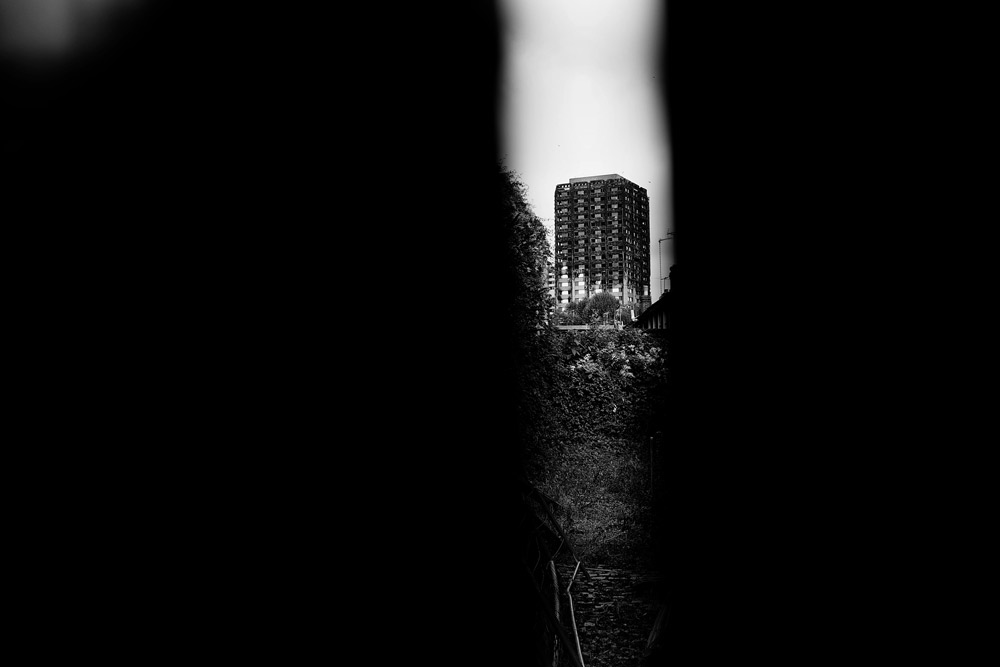
© Brian David Stevens
"The faces look out at you from the street, posters for the missing and the dead are everywhere in the area. They were a constant when I was photographing. It was vital to record these before the posters faded and disappeared and the victims became just numbers and statistics. The faded images were important.
"I started to photograph Grenfell Tower the day after the fire. I took these pictures as a member of the public. I was in the same state of shock as everybody was as I walked around the block. I didn't want to use privileged viewpoints, I wanted the same view as everybody else. I used a camera with a fixed lens that gives a similar viewpoint to your eyes, you are seeing what I'm seeing and hopefully nothing is getting in the way of that vision.
"I photographed the area every day for a month after the disaster, circling the tower. You have to immerse yourself in the subject, but no matter how many times I went back, each time I saw the burnt out husk of Grenfell Tower it utterly floored me. It never became 'normalised', it was still utterly shocking. Every day I just walked round the site making pictures, but mainly just looking. The tube station (Latimer Road) is next to Grenfell Tower and still, weeks later, the tube goes quiet as it passes; the streets are quiet. There's a huge amount of anger there under the surface. The presence of the burnt out block casts a black shadow over the area. It's been described to me as a vast tomb in the sky. It must be incredibly difficult to get on with life seeing it there every day.
"I've seen the story being exploited by all sides of the debate, without much thought for the actual victims of the fire. It's a complex situation and it helps nobody to describe it in soundbites. The BBC has been doing a very good job there. People are angry though and people are in pain, this must be realised. I knew I had to try to make honest, respectful work, and I hope I have." - Brian David Stevens, August, 2017.
The series will exhibit as part of the Northern Eye Festival in Colwyn Bay, North Wales, from October 9th to 21st, 2017.
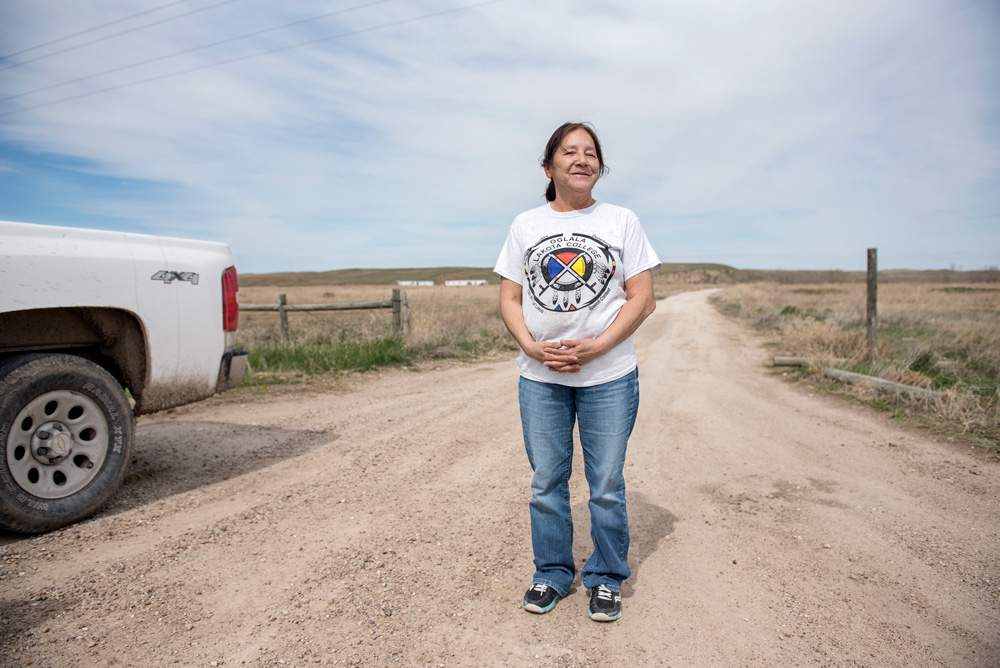
Gudrun Georges spent five days at the Pine Ridge Reservation in South Dakota with a non-profit group named One Spirit. One Spirit is not church affiliated, and is the only outside organization approved by the Sioux tribal council. Pine Ridge is an Oglala Lakota Native American reservation.
"The portraits were mostly done when I drove around dropping off food boxes. Some of these people's addresses were impossible to find - there are no street names on the reservation. One big thing that happened when I was there was the closing of the White Clay liquor shops. The state of Nebraska refused to renew liquor licenses to the few stores right outside the reservation. They have a huge alcohol problem in Pine Ridge and even though alcohol is forbidden on the reservation, White Clay is a short drive or walk away. Most Indians were very happy about this decision. They fought these White Clay stores for years."
Pine Ridge is the site of several events that marked tragic milestones in the history between the Sioux of the area and the United States government.
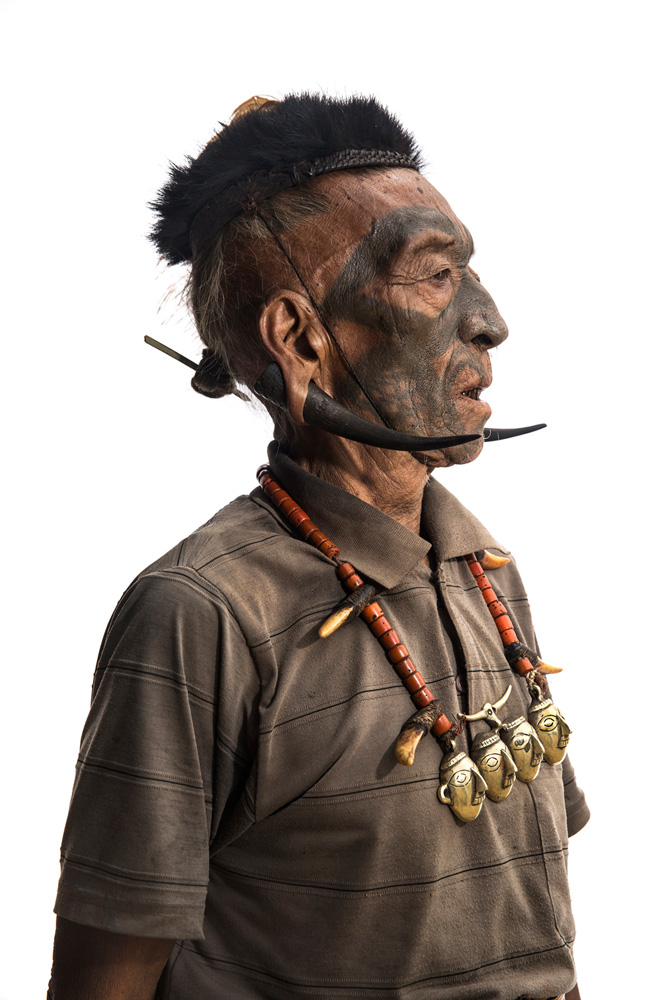
The Konyak are a Naga people, and are recognised among other Naga by their tattoos, which they have all over their face and hands; facial tattoos were earned for taking an enemy's head. Read more (Wikipedia).
Trupal Pandya was born and raised in India. He has a bachelor's degree in photography from the Fashion Institute of Technology in New York which is where we met, during a portfolio review. Trupal impressed everyone, and I left having pinched a print from Trupal's box and vowing to stay in touch. Visit his website for more portraits including Aghori, or Holy Men, and Aryans of the Himalayas.

Working within his usual creative process, Klaus Enrique turned, along with his stomach, to producing a series of Trumps. I think we both needed to get these out of our systems.
Brighten up with Klaus' previous feature Homage to Arcimboldo.
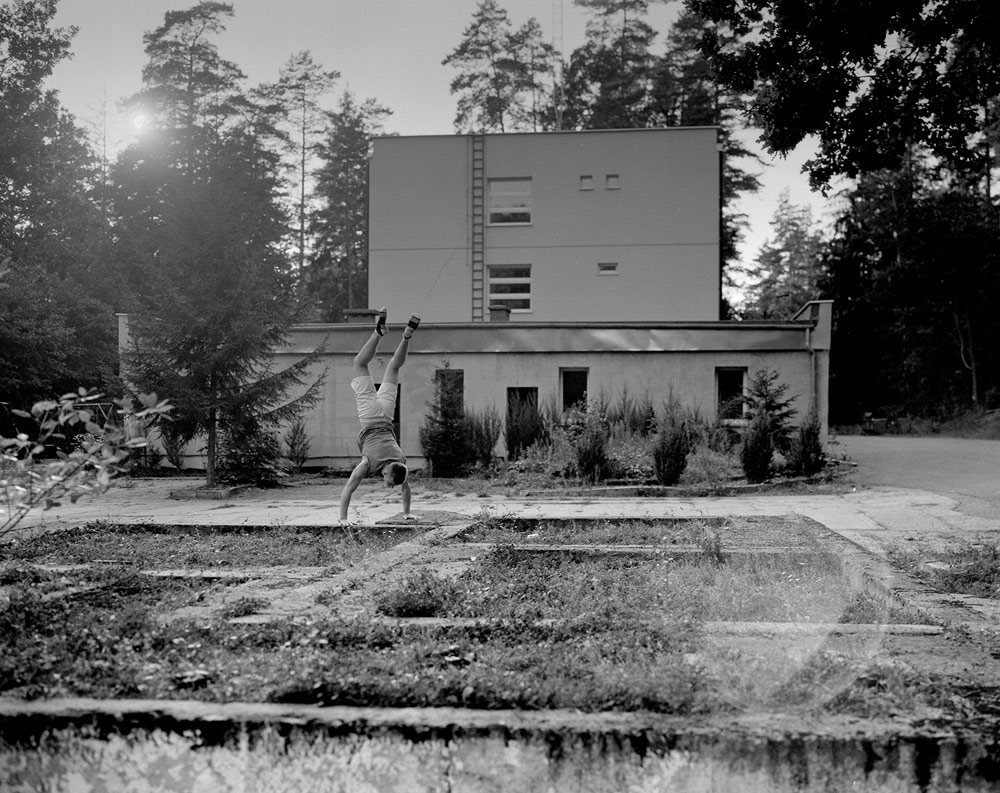
Polish photographer Kamil Sleszynski graced me with this story about a center for addiction therapy last year. "The Catholic Centre for Education and Addiction Therapy Metanoia exists since 2000. The facility helps young people addicted to drugs and alcohol.
"Located in the Knyszynska Forest in Poland, it occupies the former administration building Agroma - plants which in the past produced agricultural machinery, home appliances, and probably also weapons. Unfortunately the resort is in poor condition. If by the end of the year does not collect money for repairs, will be closed."
Since then, Kamil reports that money was raised and the center has been saved. Kamil worked hard promoting this story - perhaps it helped.
See Kamil's previous story, Input/Output, in the blog.
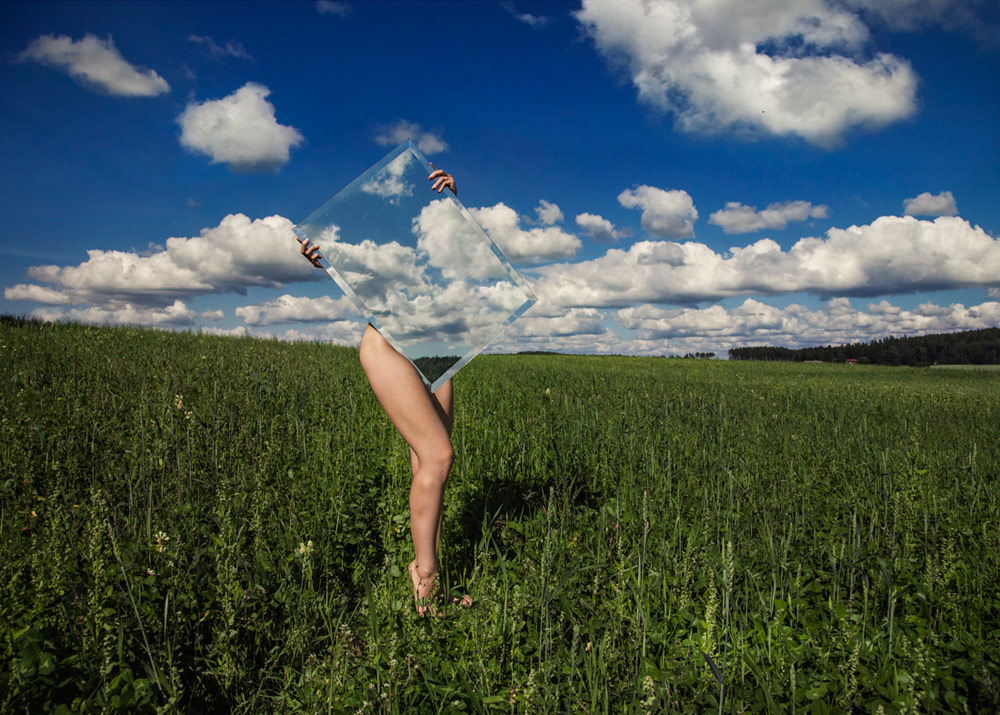
© Loreal Prystaj
Young Loreal Prystaj was one of the most enthusiastic students I met on a visit to a photography class in 2012. Fast forward to 2016, she thankfully kept in touch and I was thrilled to see this series she made during a month-long artists' residence in Finland last summer. She inserted herself into the beautiful landscape to reflect upon nature. Simply gorgeous.
"Often times, mirrors are used to emphasize the minute details, but rarely used to look at the big picture. What if nature looked at itself? What would it see? What would we be?"
Do not miss her bathtub series - she's made almost 100!

Estrella Jail © Scott Houston
I am pleased and honored to share Scott Houston's insight into the overwhelming subject of the racist mass incarceration of Americans, Incarceration Inc.: Today's American Slavery. The project features male and female inmates of Estrella Jail in Phoenix, Arizona, shown inside the jail, and outside performing their chain gang duties, and is accompanied by Scott's impassioned writing.
"The United States now has the highest rate of incarceration in the world by far, with 2.2 million citizens in prisons or jail. This phenomenon has generally been driven by changes in laws, policing, and sentencing, not by changes in behavior. The results have disproportionately impacted poor and disenfranchised communities mostly people of color, and African American men. These historic changes remain nearly invisible to many Americans.
"American slavery was technically abolished in 1865, but a loophole in the 13th Amendment has allowed it to continue as "punishment for crimes" well into the 21st century. Corporations have lobbied for a broader definition of "crime" in the last 150 years. As a result, there are more dark-skinned people performing mandatory, essentially unpaid, hard labor in America today than there were in 1830. The vast majority of prisoners have been locked up for non-violent, victimless crimes, many of them drug related. With such a large population incarcerated it comes as no surprise that big business began tapping into this potentially cost-free workforce.
"Incarceration is the new American slavery. This slavery is supported by laws and corporate interests."
"McDonalds, the world's most successful fast food franchise, purchases a plethora of goods manufactured in prisons, including plastic cutlery, containers, and uniforms. The inmates who sew McDonalds uniforms make even less money by the hour than the people who wear them. Wal-Mart's company policy clearly states that "forced or prison labor will not be tolerated by Wal-Mart" when basically every item in their store has been supplied by third party prison labor factories. Wal-Mart purchases its produce from prison farms, where laborers are often subjected to long hours in the blazing heat without adequate food or water. Other corporate businesses that profit from exploiting free prison labor are: Bank of America, K-Mart, Chevron, Exxon Mobil, Koch Industries, Microsoft, Pfizer, Pepsi, Shell, Starbucks, UPS, Verizon, Wendy's, and many, many more.
"Incarceration Inc. Today's American Slavery" is a multi-media project that addresses mass incarceration in the United States. American prisons today are functioning as commercial enterprises, backed by corporations. The U.S. justice system is riddled with racial oppression. Private business are taking advantage of vulnerable, powerless, and disenfranchised prisoners who are mostly people of color, and African American men. The invisible exploitation of cost-free inmate labor is growing."
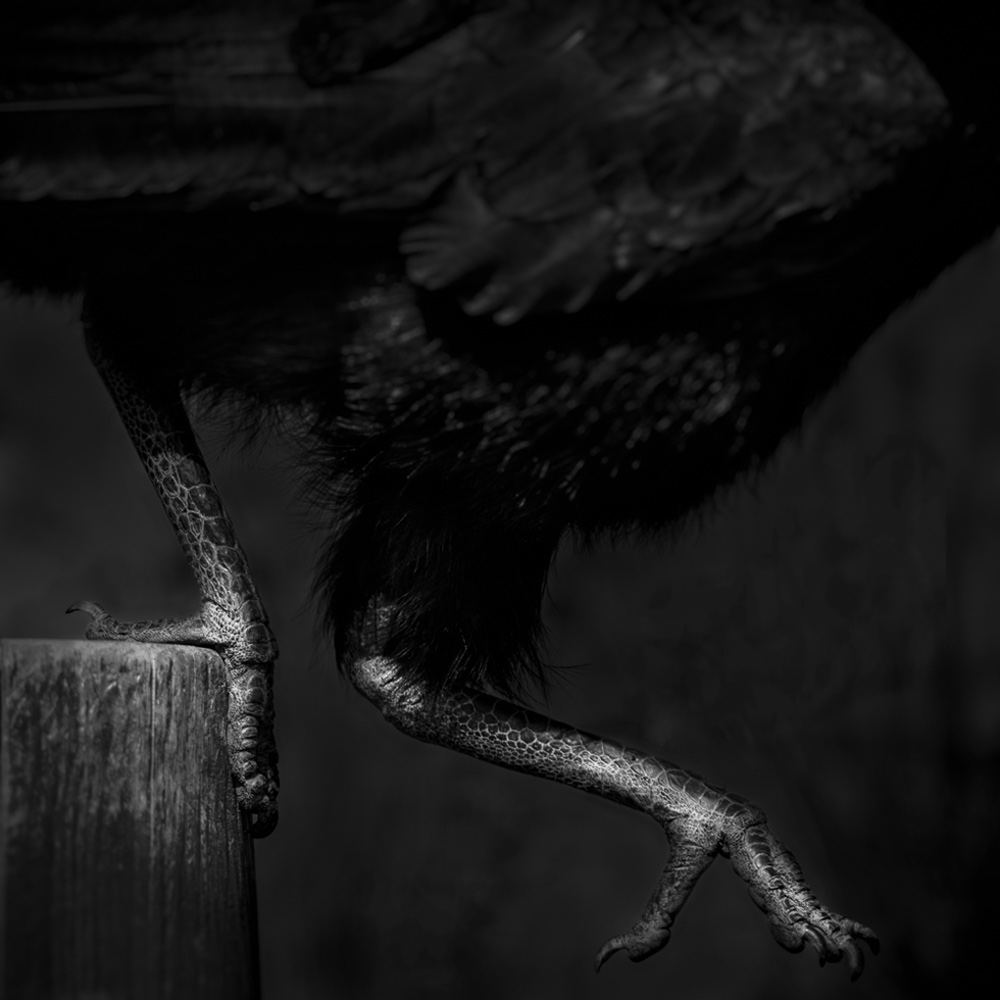
Yes, these were made at the photographer's local aviary! Nicely done, Sharon Kain - proving once again that one need not stray too far from home to make interesting photos.
Happy new year, friends.
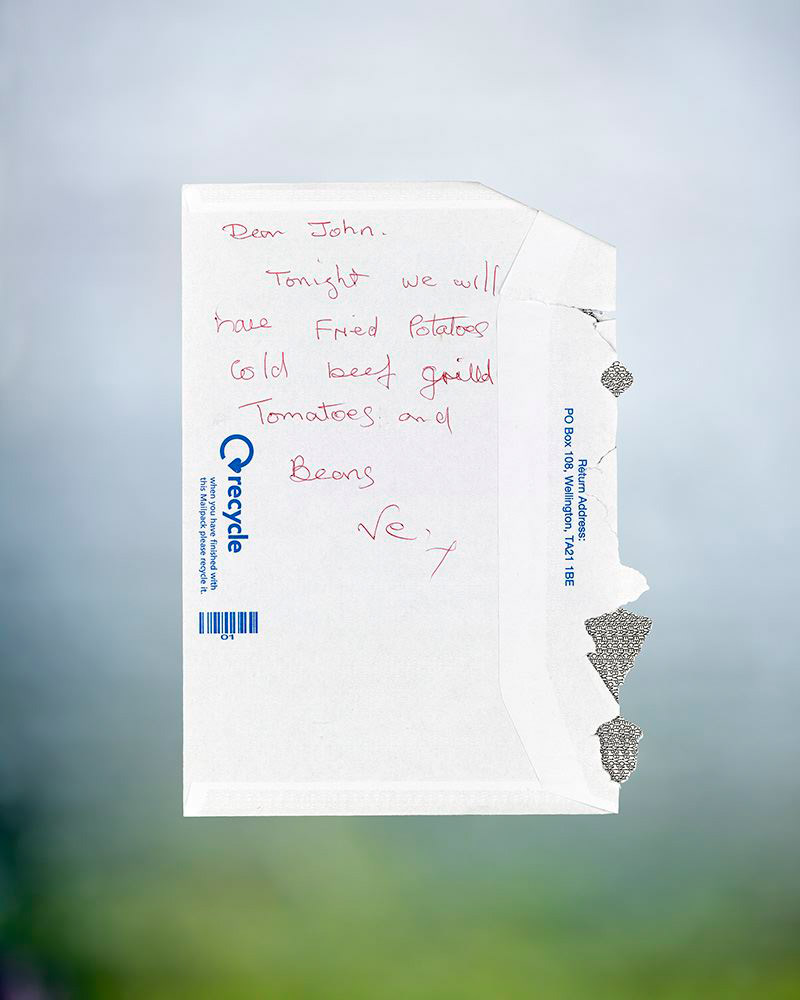
"Vera & John" is a collection of photographs that Jason Wilde made from notes that his mum, Vera, left for his Dad, John. Without Vera's knowledge, John and Jason saved more than 90 notes between 2005 and 2014. Jason then set about making more than 4000 photos of paving stones on specific streets in Camden, north London, where they and five generations of Jason's family have lived, using those images as the background for his photographs of the notes. Simply brilliant, fascinating, and fun.
View the full screen magazine photo feature - These are but a few of the insights into the life of Vera & John. See more: Jason has launched a Kickstarter campaign to turn this into a book. Enjoy the video promo, and drop a bit of cash - the pound is so weak you can get a book for $26! Contribute here.
"The idea of making a project about my mum and dad came to me while visiting their home in 2005. With no one home I had a rummage through the fridge and food cupboards before making a nice cup of tea. Leaning against the wall next to the kettle was a note. I had been collecting notes since 2003 for a different project (called 'Silly Arse Broke It') and realised that this single note outlining that evenings dinner arrangements was a potential project."
See "Silly Arse" here in aCurator Magazine.
See "Silly Arse" here in aCurator Magazine.
Recent Entries
Categories
Links
Julie Grahame Photographer Consulting Services
Archive
Accent Magazine
Life.com Top Photo Blogs
AdobeAirStream
Aglu Pocket Photo Books & Photographs
APA American Photographic Artists
Aperture
ASMP America Society of Media Photographers
bigflannel
Café Royal Books
Chatterbox
ClampArt
Conscientious
Crusade For Art
Daylight Magazine
eyecurious
Featureshoot
FlakPhoto
Fototazo
ILOVETHATPHOTO
Interview by Dirk Anschutz
Interview by Miss Rosen
Interview by SlideShowPro
Jason Florio
Jealous Curator
Jeriko
la pura vida
Lenscratch
Light Journeys
Luminous Lint
No Caption Needed
One Person Crying
Open To Beyond
Photo Hub Group
Photography and Architecture
Prism Prison Photography
Shutterhub
Stella Kramer
Ted Morrison
The Heavy Light
The Rolling Stone Years
Top Photography Films
Vintage and Modern
Wonderful Machine
Archive
Accent Magazine
Life.com Top Photo Blogs
AdobeAirStream
Aglu Pocket Photo Books & Photographs
APA American Photographic Artists
Aperture
ASMP America Society of Media Photographers
bigflannel
Café Royal Books
Chatterbox
ClampArt
Conscientious
Crusade For Art
Daylight Magazine
eyecurious
Featureshoot
FlakPhoto
Fototazo
ILOVETHATPHOTO
Interview by Dirk Anschutz
Interview by Miss Rosen
Interview by SlideShowPro
Jason Florio
Jealous Curator
Jeriko
la pura vida
Lenscratch
Light Journeys
Luminous Lint
No Caption Needed
One Person Crying
Open To Beyond
Photo Hub Group
Photography and Architecture
Prism Prison Photography
Shutterhub
Stella Kramer
Ted Morrison
The Heavy Light
The Rolling Stone Years
Top Photography Films
Vintage and Modern
Wonderful Machine

